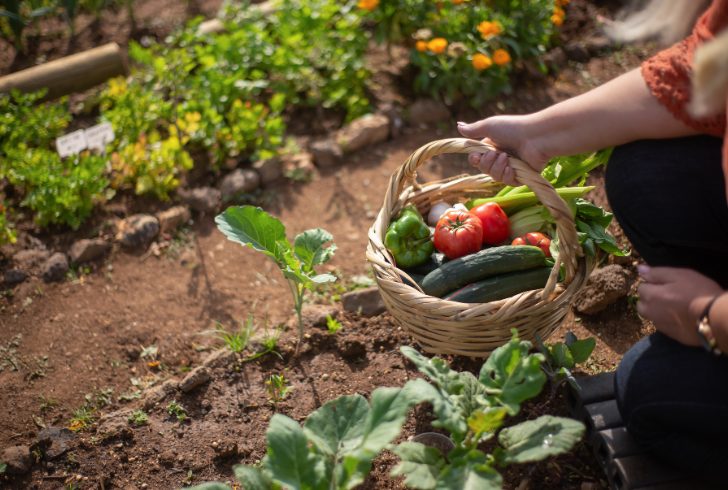City living often feels rushed, expensive, and disconnected from nature. In response, more people are exploring urban homesteading —a lifestyle that blends modern city life with traditional self-sufficiency. Instead of moving to the countryside, many are creating small-scale farms on rooftops, balconies, and backyards.
From growing vegetables to raising chickens, the movement is gaining momentum. A 2021 survey by the National Gardening Association revealed that nearly one in three U.S. households now grows food at home, a sharp rise in recent years.
So, what’s fueling this shift? Let’s look at the 15 reasons people are embracing urban homesteading.
1. The Drive for Self-Sufficiency

Freepik | prostooleh | Urban homesteaders grow food at home and enjoy self-sufficiency while reducing reliance on stores.
One of the biggest motivators is self-sufficiency. People want to take charge of how their food is produced, relying less on grocery chains and supply systems. Even small-scale projects, such as balcony herb gardens or compact coops, bring independence. By producing vegetables, eggs, honey, and herbs at home, urban homesteaders enjoy the freedom that comes with creating their own daily essentials.
2. Sustainability in Action
Another major draw is sustainability. Local food production reduces transportation needs and cuts emissions. Composting, rainwater collection, and organic gardening practices help conserve resources while lowering waste.
These actions enable people to reduce their carbon footprint without leaving the city, demonstrating that meaningful environmental choices are achievable in densely populated neighborhoods.
3. Cost Savings Add Up
Food prices continue to rise, and many families are feeling the pinch. Urban homesteading offers a way to save money while improving the quality of life. By planting fruit trees, preserving harvests, or making homemade goods, households reduce grocery bills. Over time, these efforts create noticeable financial relief, particularly in areas where the cost of living is high.
4. Healthier Living at Home
Health is another reason this lifestyle has gained momentum. Growing produce at home ensures access to nutrient-rich, pesticide-free food. Raising animals naturally also means healthier eggs and dairy.
In addition to dietary improvements, the physical activity involved in gardening and caring for animals keeps people more active, encouraging a balanced and healthier routine.
5. Reconnecting With Nature
Urban life can leave people feeling cut off from the natural world. Homesteading provides opportunities to reconnect. Whether it’s planting vegetables, raising chickens, or caring for bees, these daily interactions with living systems build awareness and appreciation. That connection often translates into improved mental well-being and reduced stress.
6. Building Resilience
Uncertainty in food supply and economic systems has made resilience more important than ever. Urban homesteading fosters confidence in the face of disruptions by providing steady food sources and valuable skills. From preserving food to generating household goods, these practices create a safety net that offers peace of mind in an unpredictable world.
7. Stronger Community Bonds

Freepik | prostooleh | Urban homesteading fosters community and encourages neighbors to share food knowledge and support one another.
Despite its focus on self-sufficiency, urban homesteading strengthens community ties. Neighbors often trade produce, share knowledge, and work together on community gardens. These efforts foster cooperation and support networks, which become invaluable in times of need. Cities that invest in such projects often see stronger social cohesion and renewed neighborhood pride.
8. Endless Learning Opportunities
Urban homesteading is also an education in itself. People learn practical skills, from soil health management to food preservation. Parents use homesteading to teach children where food comes from and why sustainable practices matter. These lessons instill values of responsibility, patience, and respect for natural systems—skills that stay with younger generations for life.
9. The Satisfaction Factor
Nothing compares to the satisfaction of eating food you grew yourself or using products you made at home. That sense of accomplishment keeps people motivated to expand their projects and try new techniques. The more successful harvests and creations they enjoy, the more rewarding the lifestyle becomes.
10. Addressing Environmental Concerns
Homesteading also appeals to those deeply concerned about environmental health. By composting, reducing food waste, and conserving water, urban dwellers play a role in protecting ecosystems. These small, daily actions contribute to global solutions, demonstrating how city-based lifestyles can be aligned with environmental stewardship.
11. A Simpler Way of Life
Modern life often feels overwhelming, filled with consumerism and constant demands. Many people are turning toward simplicity, seeking a lifestyle that prioritizes essentials over excess. Urban homesteading provides that balance by focusing on what matters—food, community, and sustainability—leading to greater clarity and contentment.
12. Shaped by Cultural Trends
Movements such as slow food, minimalism, and DIY culture have contributed to the growing popularity of homesteading. These cultural shifts celebrate creativity, hands-on skills, and intentional living. By adopting these practices, people discover alternatives to consumer-driven habits, ultimately creating more purposeful lives in the process.
13. Reliable Access to Fresh Produce
In food deserts or areas dominated by fast-food options, access to fresh produce is often limited. Urban homesteading provides individuals with the opportunity to control their food supply, ensuring a steady supply of fruits and vegetables is always available. For many, this becomes a vital part of maintaining better diets and healthier households.
14. Reducing Food Miles

Freepik | Kampus Production | Urban homesteaders grow food locally and reduce food miles while helping the environment.
Transporting food over long distances consumes energy and contributes to greenhouse gas emissions. By producing food locally, homesteaders cut down on “food miles.” This shift reduces environmental harm while ensuring food is fresher. It’s a small but powerful way urban living can align with sustainable practices.
15. Control and Customization
Homesteaders value the control they gain over their environment. They choose organic methods, decide what crops to grow, and limit the use of harmful chemicals. These decisions not only improve their food quality but also align with their values, giving them a lifestyle tailored to personal preferences.
Urban homesteading is more than a passing trend. It reflects deeper cultural shifts toward sustainability, independence, and simplicity. Whether for financial savings, better health, or stronger communities, people see real value in adopting this lifestyle.
By reconnecting with nature and gaining practical skills, city dwellers reshape modern living while creating a healthier future.

